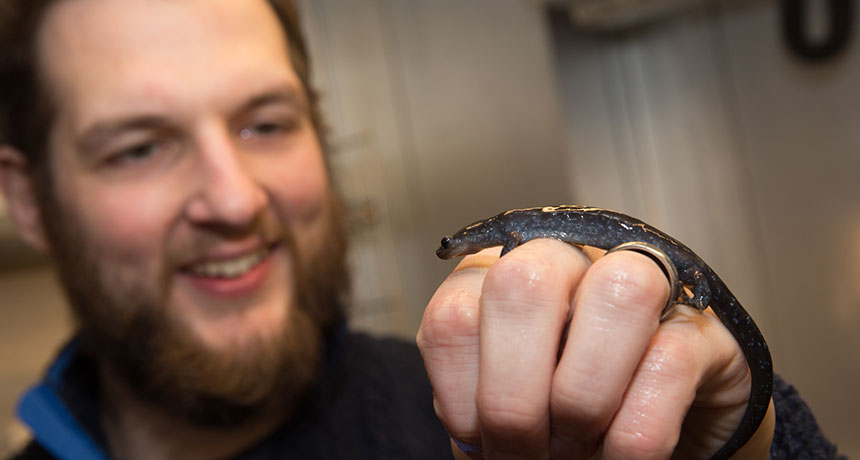For some salamanders, finding a mate is a marathon

When looking for love, some small-mouthed salamanders can really go the distance.
These intrepid amphibians (Ambystoma texanum) will risk death and dehydration to travel almost nine kilometers on average and as far as 14 to find a mate, researchers report December 20 in Functional Ecology. But all-female populations of a closely related group of salamanders that reproduce by cloning can’t go nearly as far.
Scientists tested the amphibians’ endurance on tiny treadmills. Then the team analyzed genetic differences between salamanders in patches of Ohio wetlands to see how far the amphibians might roam in the wild. Unisexual salamanders could only go a quarter of the treadmill distance that the small-mouthed salamanders could. And in the wild, they only dispersed about half as far from the pools where they were born.
By making the treacherous trek to a different pool to mate, A. texanum salamanders can mix up their genes and keep healthy variation in each population. Unisexual salamanders may have less stamina because they don’t mate in the usual way. Instead of searching for the perfect partner, they steal sperm from nearby male salamanders of different species. The sperm kick-start egg production but rarely actually fertilize eggs; only occasionally does a male’s DNA sneak into a female’s offspring.
Ditching the guys can be efficient — every member of an all-female population can give birth, and that means more babies. But it seems that going it alone has drawbacks, too: These salamanders’ poorer endurance could be a disadvantage if environmental changes forced them to colonize new territory.